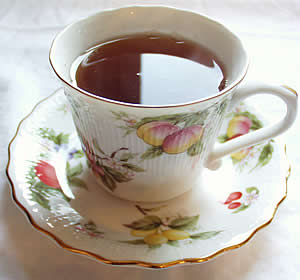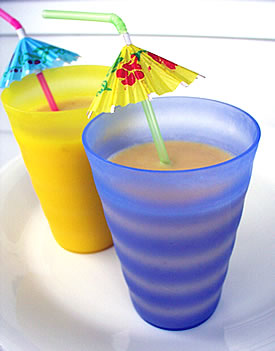Making a Perfect Cup of Tea
 Tea for Two . . . I’m a Little Teapot . . . The Boston Tea Party . . . Sound familiar? This beverage, served hot or cold, has worked its way into our pop culture, childhood songs, and history. We buy special equipment to make tea, offer it at most every social gathering, and use it as a source of relaxation and reflection.
Tea for Two . . . I’m a Little Teapot . . . The Boston Tea Party . . . Sound familiar? This beverage, served hot or cold, has worked its way into our pop culture, childhood songs, and history. We buy special equipment to make tea, offer it at most every social gathering, and use it as a source of relaxation and reflection.
Tempting Tea
Legend has it that almost 5000 years ago, Chinese emperor Shen Nong “discovered” tea when some tea leaves fell into a pot of boiling water. Curious with a scientific mind, Shen Nong drank the beverage and found it pleasurable and beneficial. The consumption of tea soon spread throughout China and then to Japan. There it quickly was associated with enhancing religious meditation in Zen Buddhism and became part of an art form, resulting in the Japanese Tea Ceremony.
 Tea was introduced to Europe as trade routes opened with the Far East. First popular in Portugal, tea spread then to Holland and France. When Great Britain became involved in the Chinese and East Indian trade routes, it, too, became enchanted with tea, which quickly became the national drink, replacing ale. Tea spread to America corresponding with the nations in charge of the colonies, i.e. to New Amsterdam (New York) which was colonized by the Dutch, then to Boston with English settlers.
Tea was introduced to Europe as trade routes opened with the Far East. First popular in Portugal, tea spread then to Holland and France. When Great Britain became involved in the Chinese and East Indian trade routes, it, too, became enchanted with tea, which quickly became the national drink, replacing ale. Tea spread to America corresponding with the nations in charge of the colonies, i.e. to New Amsterdam (New York) which was colonized by the Dutch, then to Boston with English settlers.
Because the tea trade became monopolized by the John Company, which merged with the East India Company in 1773, prices were artificially high. After the French and Indian War England imposed high taxes on tea, angering Americans, who boycotted tea consumption. The famous Boston Tea Party was the result, with leading citizens (including Samuel Adams and John Hancock) dumping hundreds of pounds of tea into the harbor. Shortly after, colonial leaders declared revolution.
 Tea Options
Tea Options
This classic beverage comes in many forms, many flavors. The first decision is: loose leaves or pre-bagged? Make every effort to use loose whole leaves. Loose leaves are much better quality than bagged, which end up being the “bottom of the barrel” broken leaves. A terrific on-line source is www.adagio.com. There are several options for the actual brewing process – loose in the pot, then strained; metal tea ball; paper tea filter; special tea pot with built-in strainer. If you are hooked on the pre-bagged types, go for quality, preferably an English brand.
As for type of tea, there are four basic categories: black, green, oolong, and herbal. Black tea has been fully oxidized whereas green skips oxidation. Oolong is partly oxidized, producing color and taste between black and green teas. Herbal teas contain no true tea leaves, consisting of flowers, berries, peels, leaves, and seeds from other plants.
Hot Tea
1. Use fresh, cold water, preferably filtered, and heat in a clean kettle.
2. Your teapot should be made from ceramic or china and preheated with hot water.
3. Use 1 teaspoon of tea leaves for every 6 oz. of water.
4. For black tea use water just at the boiling point, then steep for 5 minutes. Green tea prefers water at about 180 degrees (cool kettle for 10 minutes after boiling), and needs less brewing time, about 3 minutes. Tea packaging should list desired water temperature and brewing time.
5. If using teabags, don’t squeeze them out – this will add that dreadful bitter taste!
6. If desired, add milk (never cream – too heavy for tea), honey, sugar, or whatever pleases you.
 Chilled Tea (wonderful served with sprigs of mint!)
Chilled Tea (wonderful served with sprigs of mint!)
Fast method: Follow directions above, using twice as much tea. Pour hot tea over an equal amount of ice to cool.
Slow method: Follow directions above, then chill tea for several hours.
OR Fill a large, clear glass container with water, suspend tea bag(s) – you can make your own from cheesecloth – and set outside in the sun for 2-3 hours.


